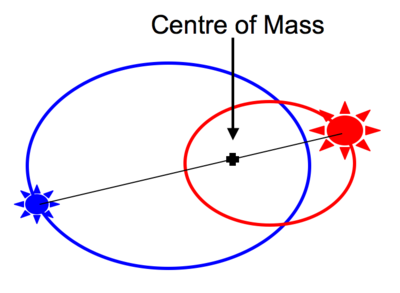Centre of Mass
The centre of mass is a useful concept in physics/astronomy. When an external force acts upon a system of particles, the particles react as though all the matter were concentrated at the centre of mass in accord with Newton’s second law of motion. Thus if we understand how the centre of mass is moving, we can understand the net force on a system.
Mathematical Definition
The centre of mass is just the position of each particle weighted by their mass.
For two point particles of mass m1, and m2, with positions x1, and x2, and respectively, the centre of mass CoM, has a position:
CoMx = (m1 x1 + m2 x2)/(m1+m2)
In more than one dimension the same concept holds, ie the y coordinate
of the centre of mass is:
CoMy = (m1 y1 + m2 y2)/(m1+m2)
and
CoMz = (m1 z1 + m2 z2)/(m1+m2)
For N particles the centre of mass concept is just the weighted sum of all the positions divided by the total mass. ie:
CoM = (m1 x1 + m2 x2 + … + mN xN)/(m1+m2+ … + mN)
Study Astronomy Online at Swinburne University
All material is © Swinburne University of Technology except where indicated.


